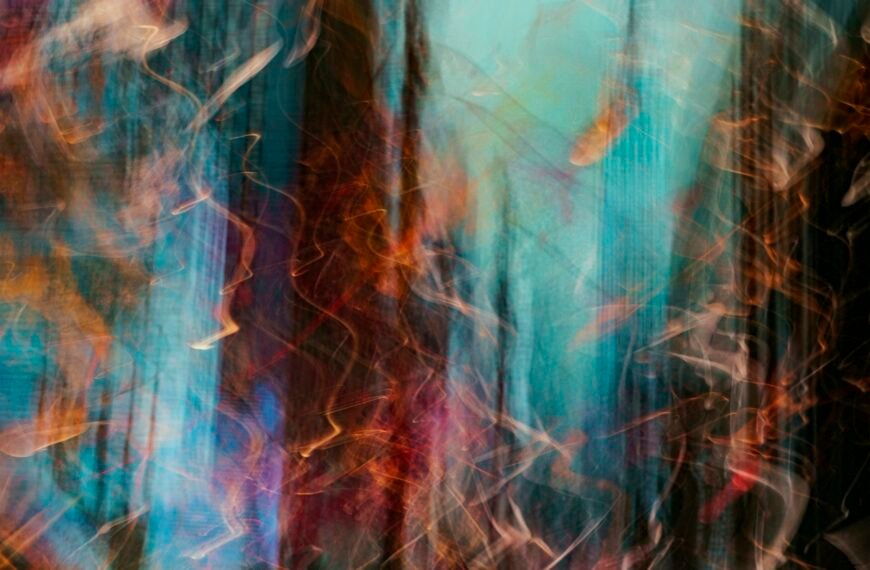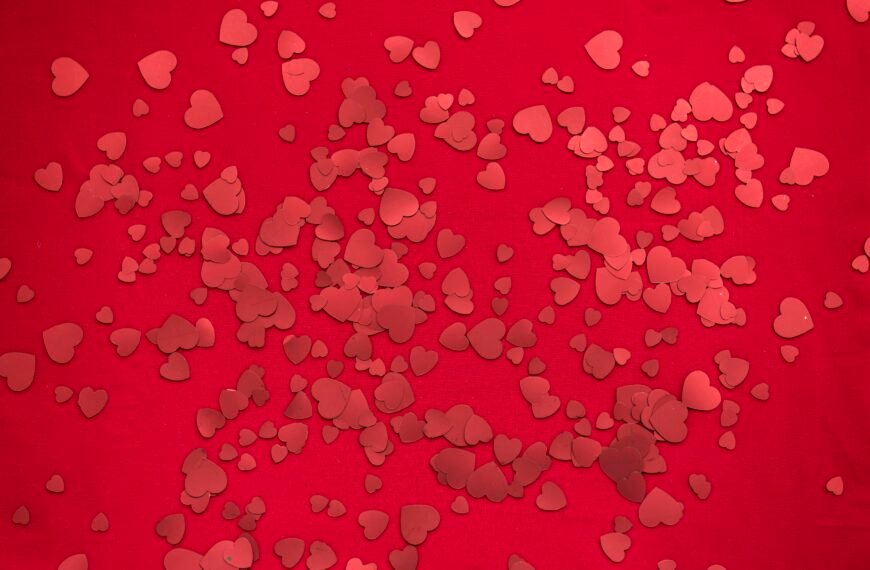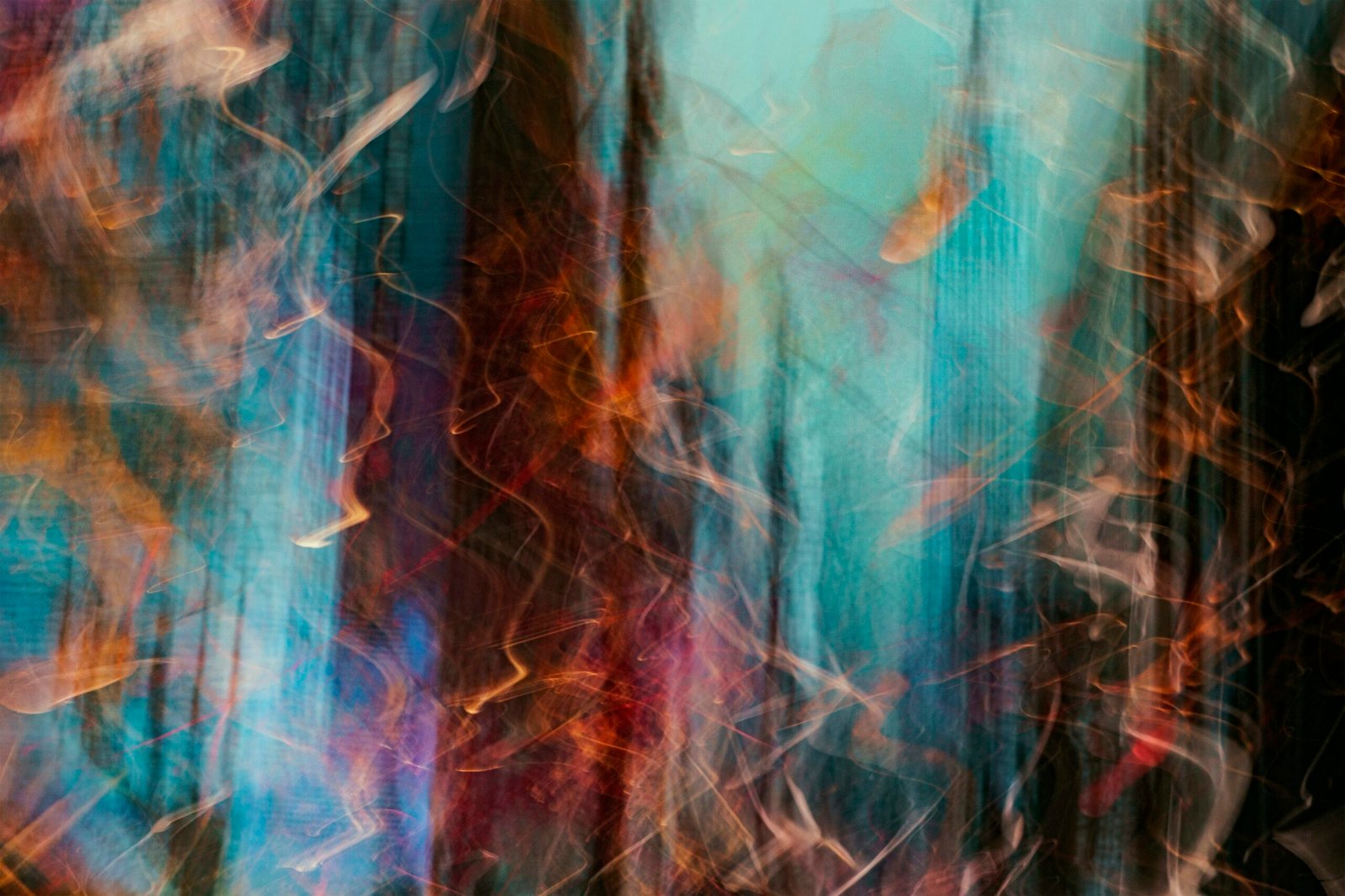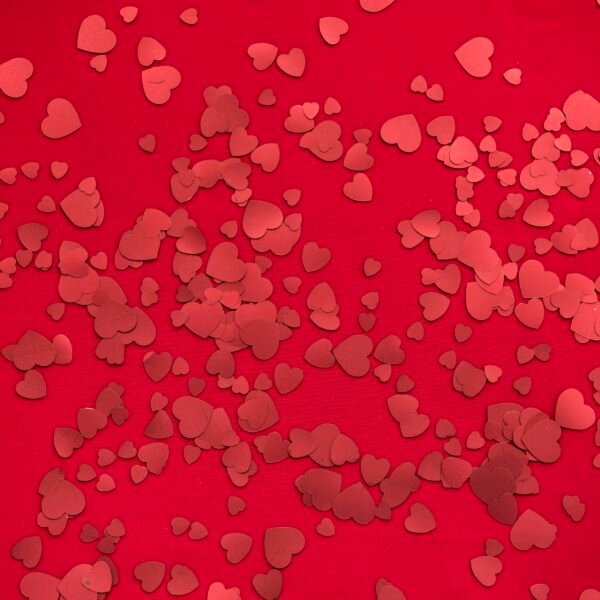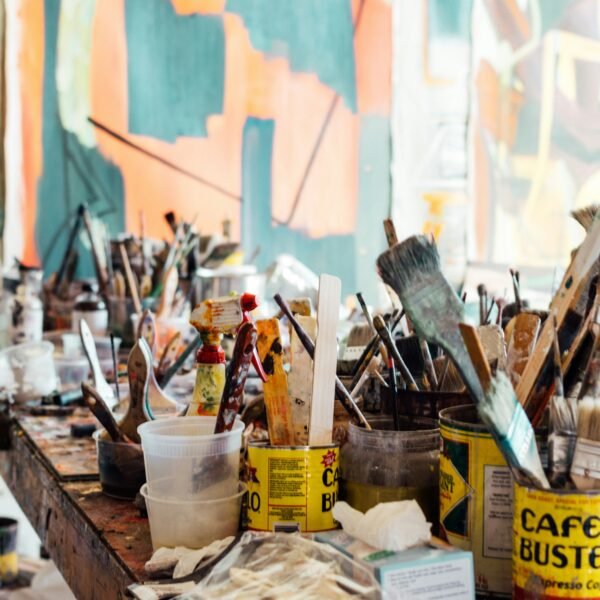Step into the captivating world of Swiss artist Thomas Hirschhorn, where handmade art acts as a vital link to our shared humanity. In his latest installation, titled “Fake It, Fake It — Till You Fake It,” Hirschhorn masterfully transforms cardboard and packing tape into a haunting portrayal of the perils of social media, artificial intelligence, and digital warfare. Through a chaotic and eclectic array of humble materials, he challenges the weaponization of technology, urging us to not only be aware but to also reclaim our authenticity in a world saturated with artificiality. Prepare to dive into a thought-provoking journey that explores the intersections of art and digital culture, all the while reminding us of the power and significance of the handmade.
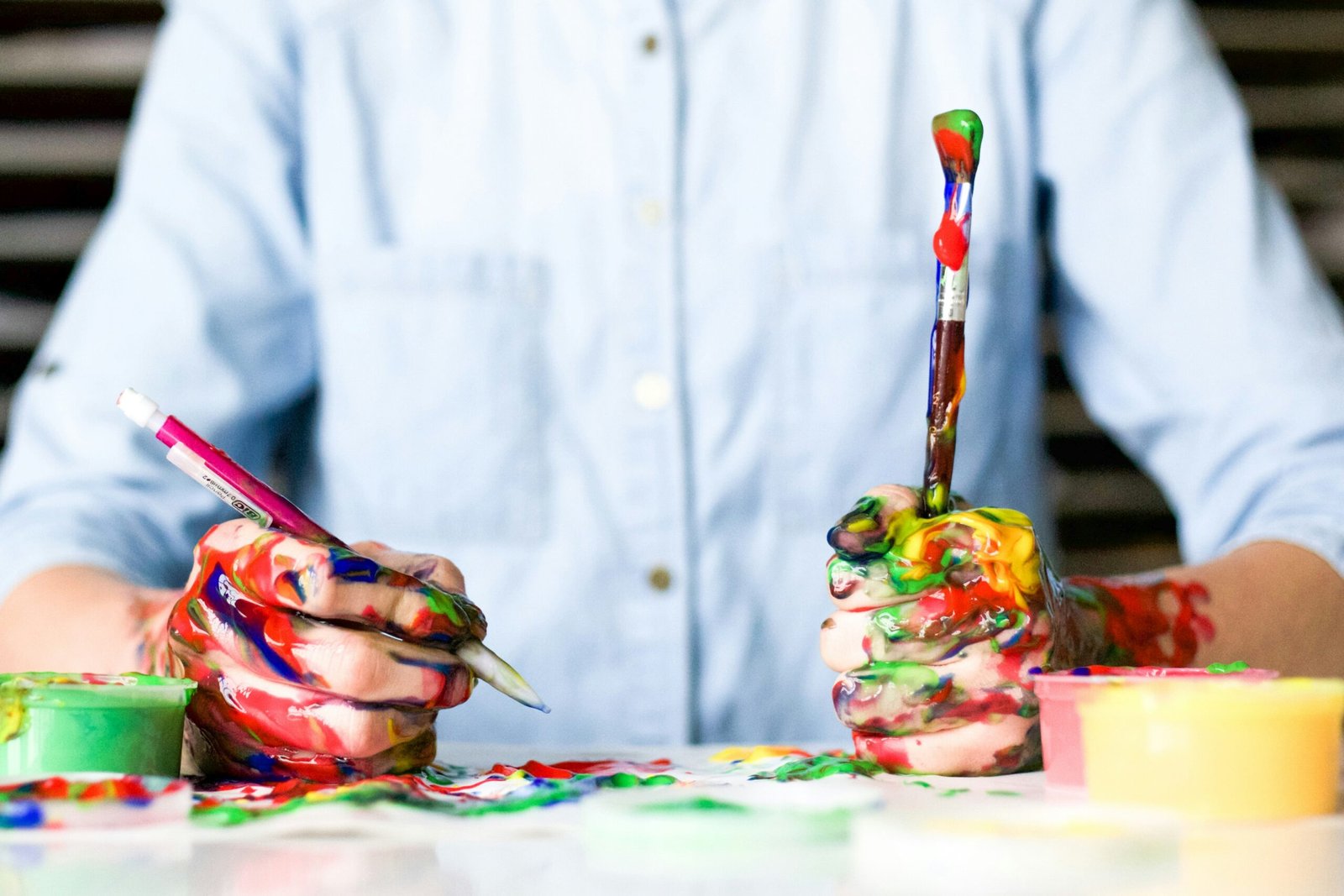
Artwork Description
Description of Thomas Hirschhorn’s installation
Thomas Hirschhorn’s installation, titled “Fake It, Fake It — Till You Fake It,” is a chaotic yet thought-provoking artwork displayed at Gladstone Gallery. The installation consists primarily of cardboard and packing tape, which Hirschhorn manipulates to create a war zone-like atmosphere. The space is filled with rows of cardboard monitors, desks cluttered with tinfoil energy drink cans and plastic foam cigarettes, and life-size cutouts of video game soldiers. Screens display printouts of screenshots from first-person shooter video games, alongside images of real war-torn cities. Overall, the installation is a combination of playful elements and a grim, aggressive tone, reflecting the themes of social media, artificial intelligence, and digital warfare.
The use of cardboard and packing tape
Hirschhorn’s choice to utilize cardboard and packing tape as the primary materials for his installation is intentional and symbolic. These materials represent the temporary and impermanent nature of our digital society. Cardboard, often associated with disposable packaging, is transformed into desks, monitors, and sculptures, challenging the notion of enduring art. The use of packing tape further emphasizes this idea, as it is commonly used for temporary fixes and as a practical tool for moving. Through these materials, Hirschhorn questions the traditional rules of art creation and subverts the notion that art must be made from long-lasting materials.
Themes of social media, artificial intelligence, and digital warfare
Hirschhorn’s installation delves into the themes of social media, artificial intelligence, and digital warfare, provoking the viewer to contemplate their implications on society. The combination of video game imagery and real-life war photographs on the cardboard screens raises questions about the blurring lines between digital simulations and actual conflict. This juxtaposition prompts us to consider the effects of virtual experiences on our perception and understanding of war. Additionally, Hirschhorn’s use of cardboard and packing tape as materials further highlights the artificial nature of our increasingly technological world, questioning the relationship between technology and humanity.
Critique of the Installation
Grim and aggressive tone
The overall tone of Hirschhorn’s installation is grim and aggressive, reflecting the serious nature of the themes he explores. The chaotic arrangement of cardboard monitors, cluttered desks, and cutout soldiers creates an atmosphere of chaos and tension. The use of tinfoil energy drink cans and plastic foam cigarettes as props intensifies this tone, suggesting a culture of excessive consumption and addiction. Through this aggressive aesthetic, Hirschhorn aims to convey the urgency and severity of the issues related to social media, artificial intelligence, and digital warfare.
Comparison to protest art
Hirschhorn’s installation can be likened to protest art due to its confrontational and provocative nature. The use of cardboard and packing tape, reminiscent of makeshift protest signs and banners, evokes a sense of grassroots activism. The installation’s message is visually and conceptually aligned with the tradition of protest art, as it seeks to challenge established systems and provoke societal reflection and action. Hirschhorn’s choice to incorporate elements of protest art contributes to the overall impact of the installation, compelling viewers to confront uncomfortable realities and question the status quo.
Simplistic portrayal of war in video games
One critique of Hirschhorn’s installation is the simplistic portrayal of war in video games. The juxtaposition of video game imagery with real war photographs on the cardboard screens oversimplifies the complex and multifaceted nature of warfare. While video games may desensitize individuals to violence, it is reductive to claim that they fully normalize or trivialize the realities of war. Hirschhorn’s portrayal lacks nuance and fails to engage with the nuanced debates surrounding the impact of video games on society. This oversimplification undermines the effectiveness of his message and may limit the viewer’s engagement with the artwork.
Questioning the effectiveness of Hirschhorn’s message
Another point of critique is the effectiveness of Hirschhorn’s message. While his installation successfully grabs the viewer’s attention and communicates a sense of urgency, there is a question of whether the artwork effectively addresses the complex issues it seeks to confront. The use of cardboard and packing tape as materials, while conceptually significant, may undermine the impact of the installation. The temporary nature of these materials can be perceived as disposable, potentially diluting the lasting impact of the message. Moreover, the aggressive tone and chaotic aesthetic may overwhelm viewers, making it challenging for them to fully engage with and understand the nuances of the themes being explored.
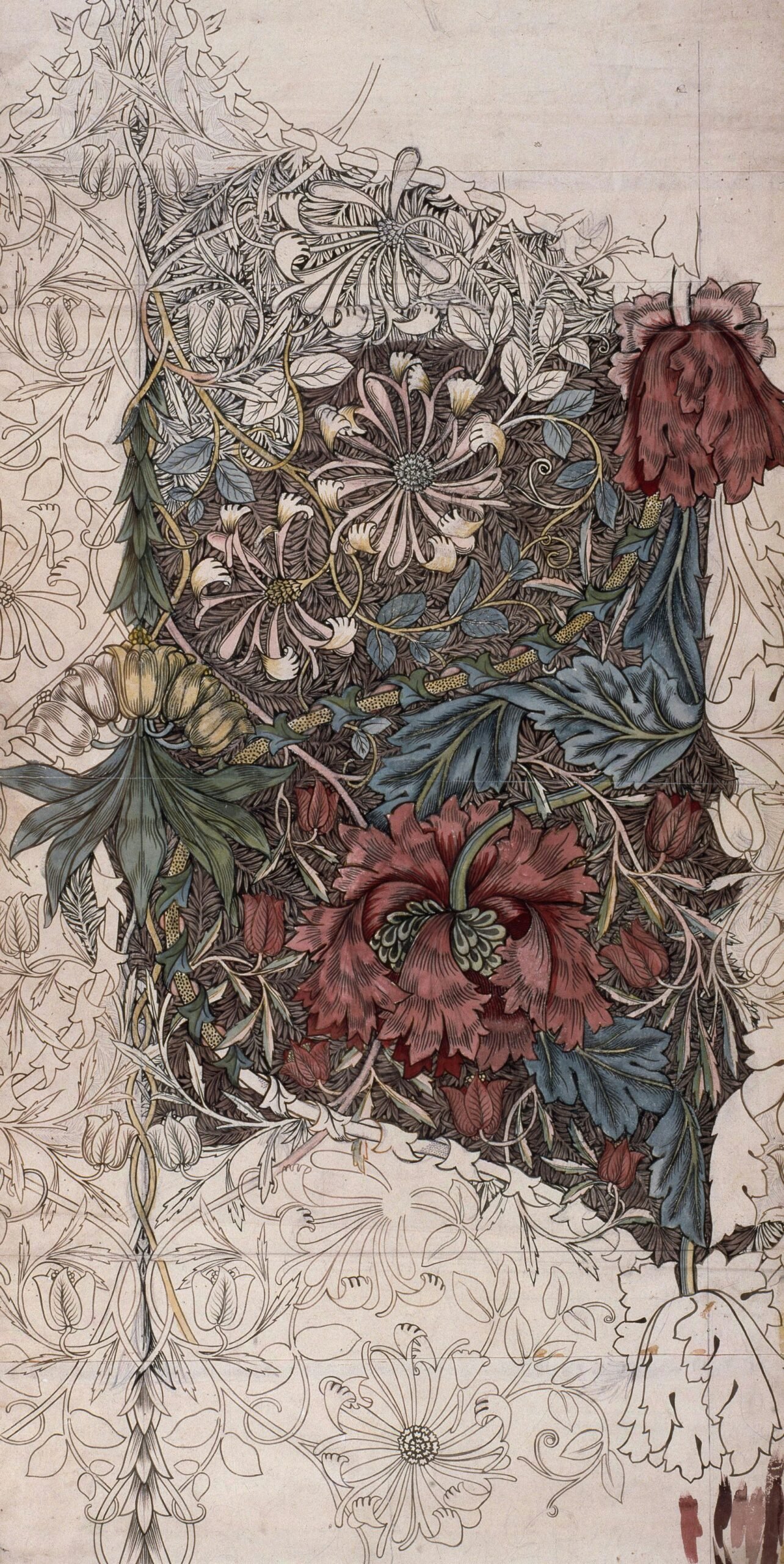
Hirschhorn’s Political Vision
The concept of ‘Precarious Sculpture’
One key aspect of Thomas Hirschhorn’s artistic vision is the concept of ‘Precarious Sculpture.’ Hirschhorn rejects the elitist rules of enduring art and instead embraces the use of common and impermanent materials. His installations are characterized by the proliferation of jumbled objects made from easily accessible materials, such as cardboard and packing tape. By creating sculptures that are intentionally precarious and impermanent, Hirschhorn challenges the traditional notions of permanence and durability in art. This approach reflects his belief that art should respond to moments of darkness and desperation, acting as a reflection of the transient and fragile nature of our contemporary world.
Rejecting the elitist rules of enduring art
Hirschhorn’s rejection of the elitist rules of enduring art is a central tenet of his artistic philosophy. He believes that art should not be confined to prestigious institutions or limited to the privileged few. Instead, art should be accessible to all and should address the urgent social and political issues of our time. Hirschhorn’s use of humble materials, such as cardboard and packing tape, further emphasizes this rejection of elitism, as these materials are readily available and devoid of the aura of preciousness associated with traditional art mediums. By breaking free from the established rules of the art world, Hirschhorn aims to create an inclusive and democratized artistic experience.
Art as a response to darkness and desperation
Hirschhorn sees art as a powerful tool for responding to moments of darkness and desperation. In his view, art has the potential to create awareness, provoke critical thinking, and inspire action. Through his installations, Hirschhorn seeks to confront the pressing issues of our time, such as social media, artificial intelligence, and digital warfare. By addressing these themes, he hopes to shed light on the darker aspects of our society, prompting viewers to question and challenge the status quo. Hirschhorn’s approach to art as a response to darkness and desperation aligns with his vision of art as a catalyst for social change and transformation.
The Message
Spray-painted message on the wall
A significant component of Hirschhorn’s installation is the spray-painted message on the wall, which serves as a direct communication of his message to the viewer. The message begins with “Dear World” and proceeds to question the limitations and implications of artificial intelligence. Hirschhorn questions why society focuses solely on intelligence when discussing artificial intelligence, proposing that we consider artificial willpower, belief, and faith as well. This spray-painted message acts as a focal point within the installation, emphasizing the urgency and importance of the themes being explored.
Questioning the limitations of artificial intelligence
Hirschhorn’s message challenges the commonly held perception of artificial intelligence as solely concerned with intelligence. By questioning the limitations of artificial intelligence, he prompts viewers to consider the wider implications and potential ramifications of advancing technology. Hirschhorn’s emphasis on artificial willpower, belief, and faith urges us to contemplate the ethical and moral dimensions of technological progress. His goal is to disrupt conventional thinking and inspire thoughtful dialogue about the potentially hazardous consequences of unchecked technological advancement.
The theme of awareness and urgency
Central to Hirschhorn’s message is the theme of awareness and urgency. By spray-painting the message “Be aware or be next!” on the wall, he implores viewers to pay attention and take action. Hirschhorn’s artwork serves as a wake-up call, urging us to recognize the dangers and complexities of the digital age. His installation and the accompanying message aim to heighten awareness of the rapid advancement of artificial intelligence and the potential implications for humanity. The urgency conveyed through the artwork encourages viewers to reflect on their own role in shaping the future and to take steps towards addressing the issues at hand.
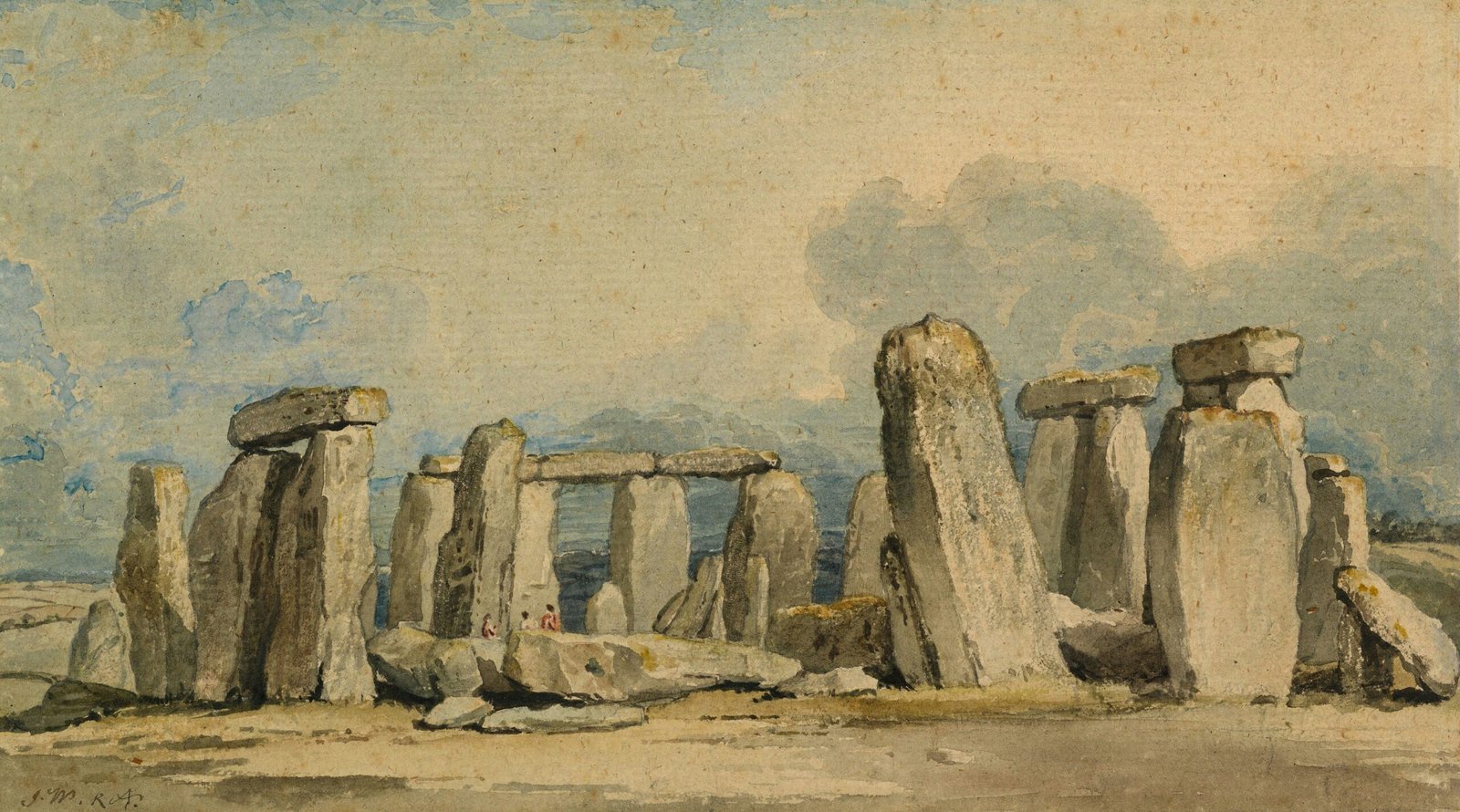
The Role of Technology
Technology as the subject of critique
Hirschhorn’s installation places technology in the spotlight, positioning it as the subject of critique. Through the use of cardboard and packing tape to mimic digital screens and devices, he draws attention to the pervasive presence and influence of technology in our lives. By appropriating familiar technological forms and disrupting their functionality, Hirschhorn challenges the viewer to question the impact of technology on our experiences, behaviors, and society as a whole. The installation serves as a critical examination of the growing dominance of technology and its potential consequences.
The impact of technology on art experiences
Hirschhorn’s work raises questions about the influence of technology on art experiences. He challenges the conventional notion of experiencing art solely through physical presence by acknowledging that online platforms and digital media have the potential to dramatically extend the reach and accessibility of an artwork. The installation’s chaotic aesthetic, captured in photographs and shared on social media, allows for a wider audience to engage with Hirschhorn’s artwork beyond those who visit the exhibition in person. This focus on technology’s role in expanding the audience and impact of art underscores the evolving relationship between art and technology.
The relation between technology and humanity
A significant theme throughout Hirschhorn’s installation is the relationship between technology and humanity. The use of cardboard and packing tape as artificial materials mirrors the artificiality of the virtual world created by technology. Hirschhorn highlights the potential dehumanizing effects of technology, pushing viewers to consider whether our increasing reliance on machines and digital platforms is distancing us from our own humanity. By juxtaposing images of war and video game simulations, he prompts us to reflect on the fine line between reality and illusion, and the ways in which technology may shape our understanding of what it means to be human.
Exposure and Accessibility
The potential reach of the installation online
Hirschhorn’s installation has the potential to reach a wide audience online due to its visually striking and thought-provoking nature. Through social media platforms and online publications, the artwork can be shared and discussed by individuals who may not have the opportunity to visit the physical exhibition. The accessibility of the installation through digital media opens up the conversation to a broader demographic, allowing for increased engagement and awareness of the themes explored by Hirschhorn. This potential reach can amplify the impact and influence of his message on a global scale.
Comparison between online viewing and in-person experience
While online viewing of Hirschhorn’s installation allows for widespread exposure, it is important to acknowledge the distinctions between experiencing the artwork in person and through digital media. In-person, viewers can immerse themselves in the physical space and engage directly with the tactile and sensory elements of the installation. The scale and presence of the cardboard structures and the overall atmosphere created by the installation may have a more profound impact when experienced firsthand. However, online viewing offers the advantage of accessibility, enabling individuals from different locations to engage with the artwork and participate in the conversation surrounding it.
Photography as a medium for the artwork
Photography plays a significant role in capturing and disseminating Hirschhorn’s artwork. The ephemeral nature of cardboard and packing tape necessitates the use of photography to preserve and document the installation. Photographs of the installation serve as a medium for sharing the artwork online, allowing for its widespread visibility and discussion. In this context, photography becomes a parallel form of artistic expression, enabling the artwork to transcend physical limitations and reach a broader audience. The power of photography lies in its ability to convey the essence and visual impact of the installation, maintaining the integrity of the artwork even in its digital representation.
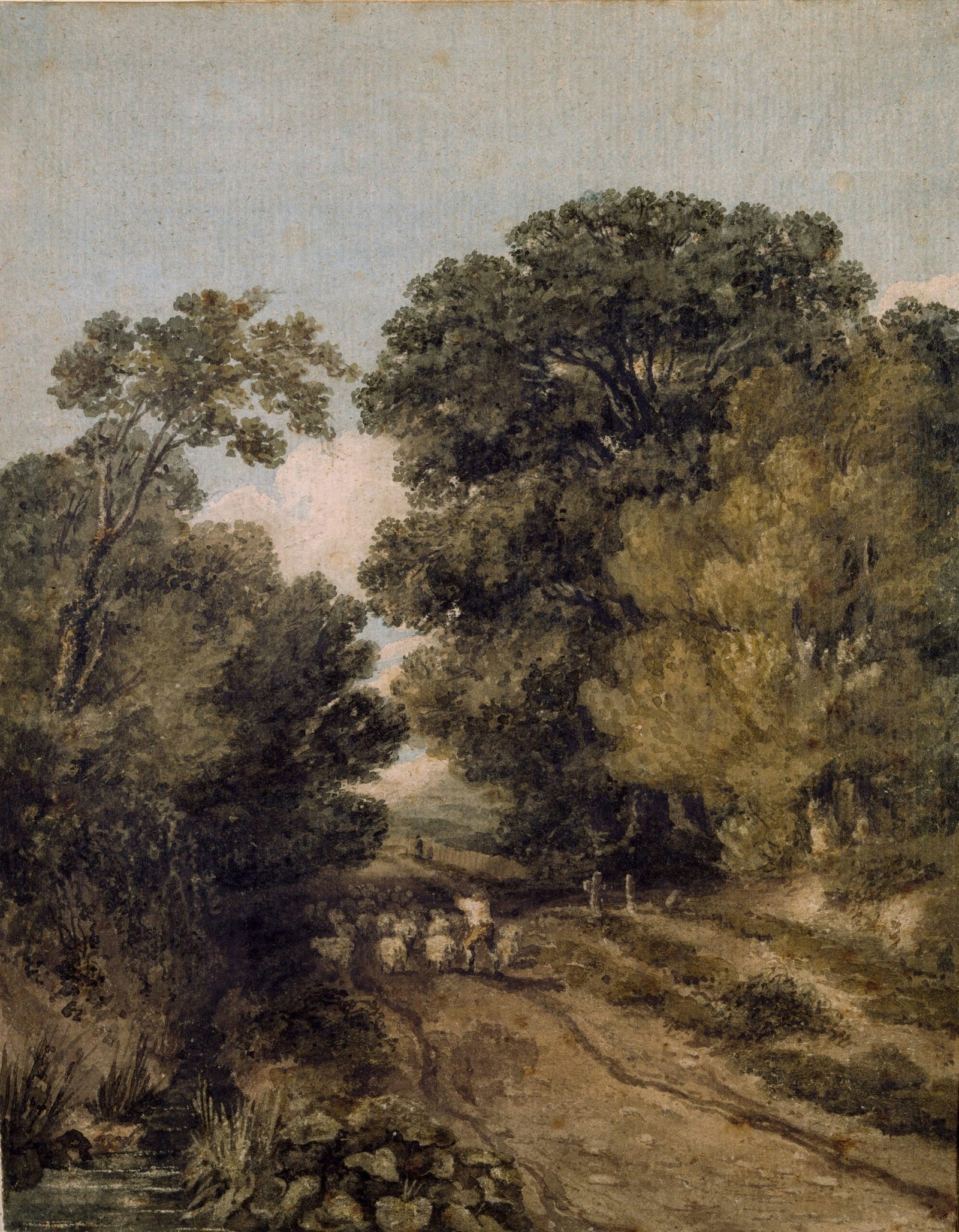
Unpacking Hirschhorn’s Concept of Creativity
The raw form of creativity
Hirschhorn’s concept of creativity is rooted in raw expression and a rejection of conventional artistic norms. His use of humble materials and the deliberate impermanence of his installations reflect a desire to strip away the constraints of traditional artmaking. By embracing a raw form of creativity, Hirschhorn encourages experimentation, spontaneity, and a focus on the process rather than the final product. The rawness of his creative approach allows for a direct and unfiltered engagement with the themes he explores, creating space for open interpretation and dialogue.
Technology as inherently inhuman
One aspect of Hirschhorn’s concept of creativity is the belief that technology is inherently inhuman. By utilizing materials such as cardboard, packing tape, and plastic foam, he emphasizes the artificiality of the digital realm and counters it with the tangible and imperfect nature of physical objects. Hirschhorn sees technology as an entity that can detach us from our humanity, leading to a loss of authenticity and genuine connection. Through his creative process, he aims to reintroduce elements of humanity and imperfection, challenging the notion that technology is the sole means of creative expression.
The artificiality of materials used in the installation
Hirschhorn’s choice of materials, such as cardboard and packing tape, reflects his exploration of the artificiality inherent in our technological society. These materials, though physically tangible, evoke a sense of impermanence and disposability, mirroring the transient nature of the digital world. The deliberate use of imperfect and mundane materials challenges the conventional associations of art with refined and enduring mediums. By embracing the artificiality of his materials, Hirschhorn subverts traditional artistic conventions and calls into question the boundaries between the natural and the artificial, the real and the simulated.
Exhibition Details
Title of the exhibition and gallery
The exhibition is titled “Thomas Hirschhorn: Fake It, Fake It — Till You Fake It” and is hosted at Gladstone Gallery.
Location and contact information
The exhibition is located at 530 West 21st Street, Manhattan, and can be reached at 212-206-7606.
Duration of the exhibition
The exhibition will run through March 2 at Gladstone Gallery.
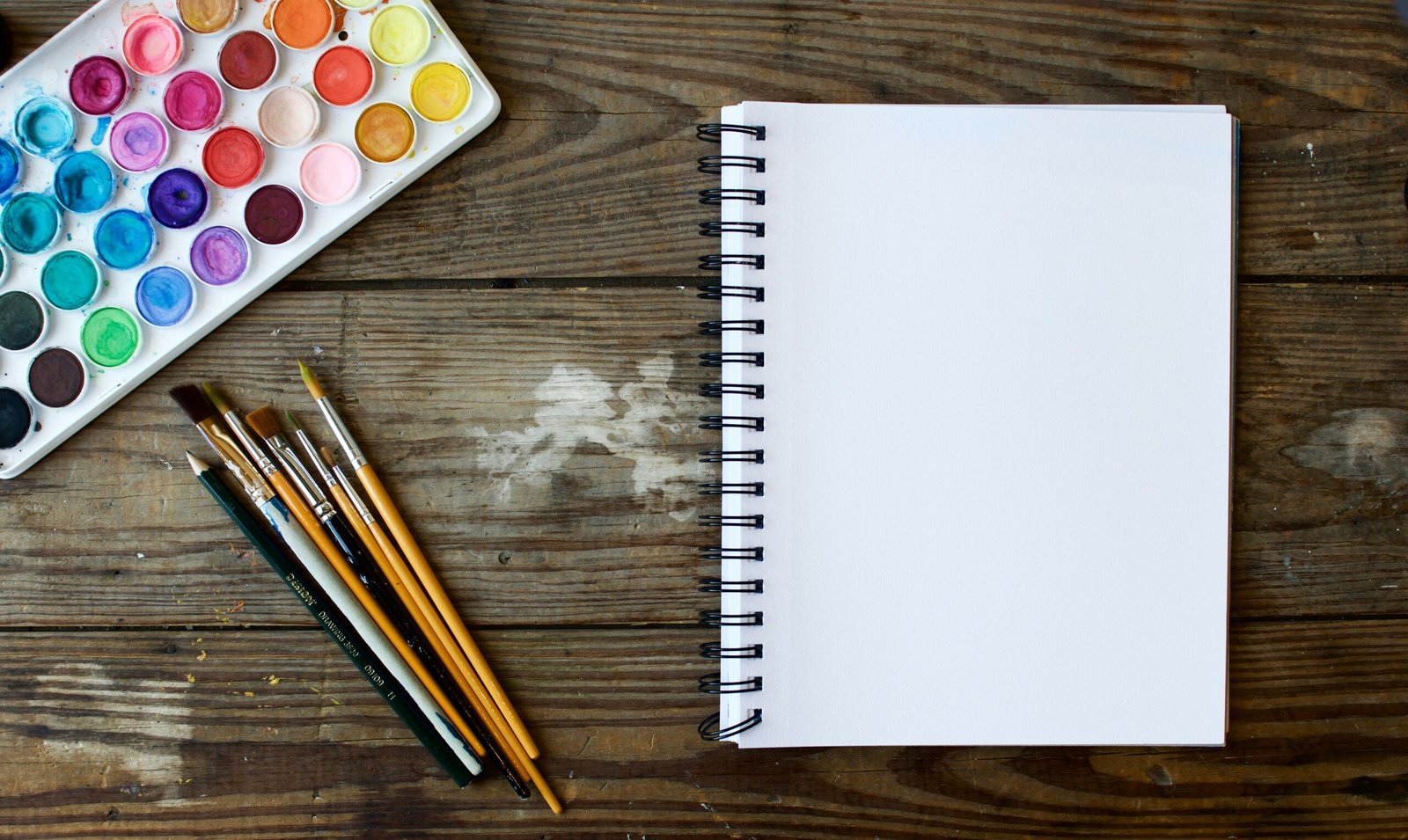
Final Thoughts
Evaluation of the installation’s impact
Thomas Hirschhorn’s installation, “Fake It, Fake It — Till You Fake It,” effectively raises important questions about social media, artificial intelligence, and digital warfare. The grim and aggressive tone of the artwork grabs the viewer’s attention and emphasizes the urgency of the themes being explored. While there may be critiques about the oversimplification of war in video games and the effectiveness of Hirschhorn’s message, the installation successfully sparks reflection and critical dialogue. Its online exposure and accessibility contribute to its impact, extending the reach of the artwork to a wider audience.
Assessment of Hirschhorn’s artistic approach
Hirschhorn’s rejection of the elitist rules of enduring art and his embrace of impermanent materials challenge traditional artistic norms. His concept of ‘Precarious Sculpture’ redefines the boundaries of artmaking, emphasizing the transient and fragile nature of our contemporary world. Hirschhorn’s use of technology as the subject of critique and his exploration of the relationship between technology and humanity offer a fresh perspective on the role of technology in art and society. His raw form of creativity invites experimentation and spontaneity, fostering an environment of open interpretation and dialogue.
Consideration of the relationship between art and technology
Hirschhorn’s installation encourages us to contemplate the relationship between art and technology. Through its use of cardboard, packing tape, and spray-painted messages, the artwork bridges the gap between physical and digital mediums. The online exposure of the installation challenges traditional notions of art consumption and extends the reach of the artwork beyond the physical exhibition space. Hirschhorn’s exploration of the artificiality of materials and his critique of technology prompt us to question the impact of technology on art experiences and the broader implications for humanity.
Additional Resources
Links to further articles or interviews about Thomas Hirschhorn’s work
- Article: “For Thomas Hirschhorn, Handmade Art Keeps Us Human”
- Interview: The Art Assignment – Thomas Hirschhorn: Worst Exhibition Ever
Related artworks or exhibitions
- “Gramsci Monument” by Thomas Hirschhorn
- “Cavemanman” by Thomas Hirschhorn
- “Inflammatory Essays” by Jenny Holzer

